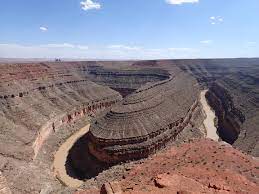Rejuvenation refers to the process by which a landscape experiences renewed erosion and reshaping after a period of relative tectonic stability or reduced erosion. It occurs when external forces, such as tectonic movements, changes in climate, or alterations in base level, disrupt the equilibrium of a landscape and lead to increased erosion and landform development.

Key Factors Influencing Rejuvenation
- Tectonic Activity: Tectonic forces, such as the uplift of mountain ranges or the subsidence of land, can significantly impact the landscape. The uplifting of a region exposes the land to greater erosive forces, while subsidence can lead to changes in drainage patterns and the formation of new river channels.
- Climate Change: Changes in climate, such as shifts in rainfall patterns or glacial retreat, can affect the intensity and rate of erosion. Increased rainfall or the melting of glaciers can lead to more water flow, which in turn enhances erosion and reshapes the landscape.
- Base Level Changes: Base level refers to the lowest point to which a river can erode its channel, typically the sea level. If the base level falls due to changes in sea level or the creation of a new lower outlet for rivers, it can cause rejuvenation by increasing the erosive capacity of the river.
- Isostatic Adjustment: Isostatic rebound or subsidence, which occurs as a response to changes in the Earth’s crustal mass, can lead to changes in land elevation. This adjustment can rejuvenate landscapes by exposing new areas to erosion or altering drainage patterns.
Processes and Features of Rejuvenation
- River Incision: Rejuvenation often results in river incision, where rivers erode their channels more deeply into the landscape. This process leads to the creation of river valleys, canyons, and gorges.
- Formation of Terraces: Rejuvenation can cause the formation of river terraces, which are flat, elevated platforms on the sides of river valleys. These terraces are remnants of previously higher floodplains that were left behind as the river incised its channel.
- Waterfalls and Rapids: As rivers cut deeper into the landscape during rejuvenation, waterfalls and rapids can form, especially in areas with resistant rock layers.
- Increased Sediment Transport: Rejuvenation leads to increased erosion, resulting in a higher sediment load in rivers. This can lead to the deposition of sediment in lower reaches of rivers, causing aggradation (building up) of the riverbed.
Significance of Rejuvenation
Rejuvenation plays a crucial role in shaping the Earth’s surface and creating various landforms. It can lead to the development of new valleys, river channels, and features like waterfalls and gorges, which add to the diversity and beauty of landscapes.
Furthermore, rejuvenation influences the evolution of landscapes over geological time. The process is an essential part of the dynamic cycle of erosion and deposition, helping to shape the topography of regions and contributing to the continuous change of Earth’s surface.
In conclusion, rejuvenation is a geomorphic process that occurs when a landscape experiences renewed erosion and reshaping due to various factors, such as tectonic activity, climate change, and base level changes. This process is vital for the evolution of landscapes and the creation of diverse landforms, contributing to the dynamic nature of Earth’s surface over geological time.
Important Links